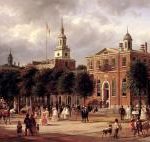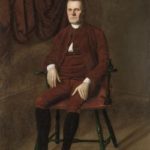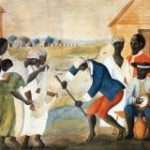This short video explains the differing perspectives that emerged about the Constitution and slavery. Some, like Frederick Douglass, believed that the Founders put slavery on the road to extinction while others, like Roger Taney, believed that the Constitution was a slaveholders’ document. Professor Gordon Lloyd contends that the slavery clauses in the Constitution both limited and expanded slavery’s impact, and that the Founders alone do not bear responsibility for slavery’s later expansion.
Act IV: How Did the Constitutional Convention Conclude?

This short video analyzes the final days of the Convention, when the delegates were eager to leave but also mindful of the work they had accomplished. They were “smart people who had learned from spending 88 days together” and even those opposed to the Constitution (Randolph, Mason, and Gerry) had the opportunity to dissent. Professor Gordon Lloyd agrees with Franklin that the Constitution did not achieve perfection but, rather, created a “more perfect union.”
Act III: How Did the Constitutional Convention Work Out the Details of Government?
This short video examines the role played by the Committee on Detail in defining the powers of Congress, the most important of which were the power to tax and the power to regulate commerce. The Committee wanted to promote an interstate commercial republic and specified congressional powers to achieve that goal. According to Professor Gordon Lloyd, the inclusion of the “necessary and proper clause” was the most significant contribution of this Committee.
Act II: What Was the Connecticut Compromise at the Constitutional Convention?

This short video explores the Connecticut Compromise, in which the delegates rejected an “either/or” solution to the question of representation and instead “thought out of the box,” creating a government that was partly national and partly federal. Professor Gordon Lloyd points out that although the final vote (5/4/1) on the Compromise did not reflect a bi-partisan consensus, it nevertheless was a significant breakthrough for moving on to other issues.
Act I: What Were the Various Plans at the Constitutional Convention?

This short video highlights the four plans discussed during the first two weeks of the Convention: Madison’s Virginia Plan; Sherman’s New Jersey Plan; Hamilton’s “monarchical” plan; and, finally, Madison’s amended Virginia Plan. Each plan attempted to reconcile the potential conflicts between a strong national government and strong state governments. Professor Gordon Lloyd notes that an inability to compromise resulted in a stalemate after the first two weeks.
